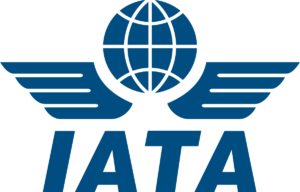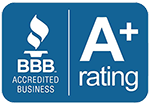Decoding Airline Fare Classes to Make the Most of Your Miles
Image source: unsplash.com
The world of aviation can be very complex. One of the most confusing things is ticket prices because we all know that the amount you and all the other passengers on the plane will pay will be completely different.
Every passenger knows the different service classes, namely Economy, Premium Economy, Business, and First Class. But they have subdivisions that even frequent travelers can’t understand.
The fact is that the fare classes are complex and vary according to the chosen airline. Knowing the importance of these fare classes and knowing what their specifics are, you can find an elusive award ticket, book an upgradeable fare, or try to figure out how many miles you’ll earn for an upcoming trip.
So, in this article, we will try to explain their meaning and give a little more clarity about the fare classes.
Fare class basics
The most important thing to understand about fare classes is that they divide each seat on the plane into different categories. Thus, each category has a different price and rules.
The way the fare classes are identified is by using a letter that is the code of the given fare. Some of the codes are standard for all airlines, but some differ depending on the selected airline.
Here are some examples of fare basis codes for different classes :
- Y – code that identifies full fare economy tickets
- J – full fare business class ticket
- F – it is a full fare first class ticket
In short, all the different fare classes codes that an airline uses, help the airline reservation systems and travel agents to sell tickets by keeping track of which fare classes are still available and whether a fare class is sold out.
It is essential to share that some airlines provide basic information, while others may provide you with much more detailed information, including upgrade and award fare codes.
In addition, it is crucial to say that many discounted fares have strict rules related to changes, baggage allowances, refunds, and earning frequent flyer miles or elite credit.
Many airlines don’t award frequent flyer miles if you buy a ticket in the most discounted economy fare class. So you need to carefully check each airline’s conditions to make sure you choose an excellent offer.
How fare classes affect you ?
We have seen how a ticket from the same airline and route differed on two days. For example, if you want to fly from New York to Italy, yesterday the ticket price could have been $505, and today it could be $580.
And here comes the frequently asked question from passengers: Why is the same ticket so expensive in one day?
The short answer is that these are two different tickets. They differ in the tariff class. It means that the fare class priced at $505 has already been sold out, so they are leftover from another class where the price is higher.
That is one of the most common reasons for having cheap tickets one day and changing the price the next. Unfortunately, most passengers do not understand this.
That is why it is essential to know each airline’s rules to find the best offer for you. In this regard, remember that you can book a flight, cancel within 24 hours, and get a full refund in most cases. But this requires a little more detailed research on the airline.
Last but not least, you should know that some airlines will either prevent you from upgrading tickets booked into certain fare classes or will add cash copays to do so.
That’s why you need to know what fare class of flight ticket you have booked because this will help you understand how that will affect your flight.

Image source: unsplash.com
Standard practices and common fare rules
The next question about fare classes is: What are the practices and rules? A single letter denoting a fare class in itself can be difficult for a passenger to understand. Imagine a combination of several letters? You certainly need to know the meaning of each letter to understand this.
The series of alphanumeric characters is known as a fare basis code. This combination gives information about your flight and, more precisely, whether a fare class has any routing restrictions, whether it is refundable, suitable for one-way or round-trip tickets, departing to or from specific countries, combinable with other fares, etc.
That is detailed information gathered in a combination of letters. Keep in mind that understanding these codes requires knowledge and experience, as each airline has its specifics and describes them differently.
Standard fare classes in the points and miles hobby
As we shared above, the most commonly used codes for defining a fare class are:
- Y: Economy
- W: Premium economy
- J: Business
- F: First
Keep in mind that not all seats involve award tickets and upgrades. Quite often, passengers who want to go First Class see available seats and ask the question: Why won’t my carrier upgrade me?”.
In this regard, it is crucial to know that if those seats aren’t placed into the fare class designed for upgrades, the carrier isn’t making them available for upgrades. That may change but is usually 30 or 60 minutes before the flight.
Special fare classes
Most airlines use special fare classes for passengers, products, and other situations. Interestingly, they are available only to special customers with higher status or a particular card type. In this way, they gain access to a different fare class.
In conclusion, we can say that knowing your fare class is essential. This way, you know if you’ll earn 100% of your frequent flyer miles from a purchased ticket, as well as find out if that ticket allows you to upgrade, change, refund, etc.
Moreover, when you know the practices and rules, you will get the best out of the fare classes.





